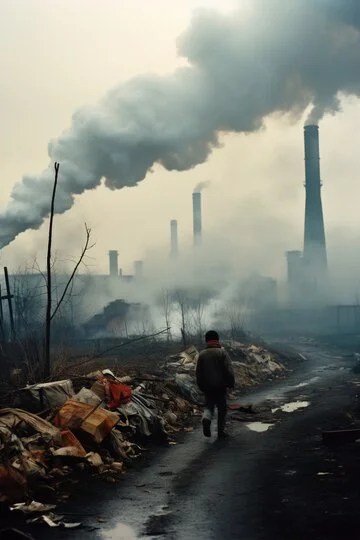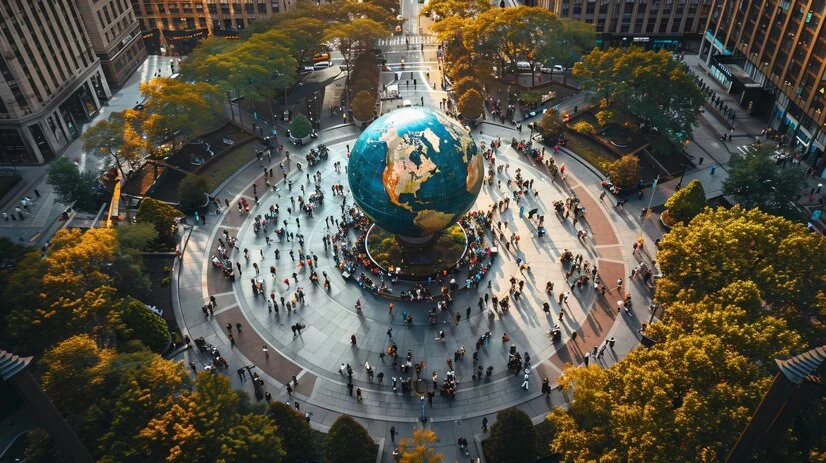Introduction to Air Pollution in Asia
Air pollution remains a critical challenge across Asia, impacting millions of lives daily. As industrial powerhouses, countries like China and India face the dual challenge of maintaining economic growth while mitigating the health and environmental effects of pollution. Efforts to combat this issue involve government policies, technology, and regional cooperation. In this article, we’ll explore the strategies Asia employs to reduce air pollution and improve the quality of life for its citizens.
The Current State of Air Pollution in China and India
Asia’s major cities have some of the world’s highest pollution levels. For instance, in Beijing, coal burning, vehicle exhaust, and industrial output contribute heavily to the air’s particulate matter (PM2.5) levels. In India, cities like Delhi and Mumbai struggle with seasonal crop burning, heavy vehicle emissions, and construction dust. According to the World Health Organization, PM2.5 levels in these cities are often multiple times higher than recommended, contributing to severe health risks.
Table: Air Quality Statistics in Key Asian Cities
| Country | City | Primary Pollutants | Annual PM2.5 Levels (µg/m³) | Health Impact (Deaths per Year) |
| China | Beijing | Coal, Vehicles | 85 | 80,000 |
| India | New Delhi | Vehicles, Crop Burning | 98 | 120,000 |
| Thailand | Bangkok | Traffic, Industry | 58 | 25,000 |
Source: Data sourced from WHO and national air quality monitoring agencies.
Key Factors Contributing to Air Pollution
Several factors exacerbate air pollution in Asia:
- Industrial Emissions: High levels of pollutants stem from manufacturing industries and power plants that rely on coal.
- Transportation Emissions: The rapid increase in vehicle use, especially diesel-powered vehicles, adds significantly to air pollution.
- Agricultural Practices: Seasonal crop burning is a substantial contributor, particularly in Northern India, releasing large amounts of smoke and particulate matter.
- Urbanization and Construction: Expanding cities and construction projects generate dust and particulate pollution, compounding urban air quality issues.
Government Policies and Initiatives in China
China has implemented several ambitious policies to curb pollution, such as the National Air Pollution Control Action Plan. Through initiatives like shutting down or upgrading coal plants and setting stricter emission standards for vehicles, China has seen measurable improvements in urban air quality. Beijing, once infamous for its “airpocalypse” smog, has introduced low-emission zones, electric buses, and heavy fines for violators to improve its air.
India’s Efforts to Combat Air Pollution
India launched the National Clean Air Programme (NCAP) in 2019, targeting a 20-30% reduction in particulate pollution by 2024. This includes efforts like expanding public transport, promoting electric vehicles, and setting emission caps for industrial sectors. In cities like Delhi, where pollution spikes during winter due to crop burning, the government has experimented with policies like the “odd-even” vehicle rule to limit traffic pollution.
Innovative Technologies and Solutions
Innovation plays a vital role in combating air pollution. In Beijing, large-scale outdoor air purifiers are being tested to filter pollutants in high-traffic areas. In both China and India, governments are investing in solar and wind energy to gradually reduce reliance on coal. Moreover, IoT-based air quality monitoring systems are helping authorities gather real-time data and respond quickly to pollution peaks.
Collaborative Regional Efforts in Asia
Addressing air pollution in Asia requires regional collaboration since pollutants can easily cross borders. The ASEAN Agreement on Transboundary Haze Pollution is an example of cooperation among Southeast Asian countries to address seasonal smog from forest fires. Additionally, Japan, the EU, and the U.S. are working with Asian countries to share technology and policy expertise, strengthening Asia’s overall response to air quality challenges.
Challenges and Limitations in Air Quality Improvement
While progress is being made, several obstacles remain:
- Economic Dependency on Polluting Industries: Many Asian economies rely on industries like coal, which hampers the transition to cleaner energy sources.
- Infrastructure Limitations: In countries with rapid urbanization, clean technology infrastructure lags behind.
- Social and Cultural Barriers: In agricultural areas, crop burning is a traditional practice that is difficult to regulate despite its environmental impact.
Future Directions and Recommendations
Efforts to reduce air pollution in Asia can be enhanced by:
- Strengthening Policy Enforcement: Stronger enforcement of existing environmental regulations could significantly reduce emissions.
- Investing in Clean Technologies: Governments need to prioritize funding for renewable energy, electric transportation, and sustainable agricultural practices.
- Engaging the Public: Public awareness and participation are critical. Community-driven efforts, like reducing waste burning and carpooling, can help lower pollution levels locally.
Conclusion
Air pollution in Asia poses a complex challenge but also offers an opportunity for countries to collaborate and innovate. Through a combination of strict policies, technological advances, and regional cooperation, Asia can make substantial progress in its fight against air pollution, improving health outcomes and fostering a more sustainable future for its population.
FAQs
- What are the main causes of air pollution in Asia?
- The primary sources include industrial emissions, vehicle exhaust, crop burning, and construction dust.
- How does air pollution impact health in Asian countries?
- Air pollution is linked to respiratory diseases, heart problems, and increased mortality in cities with high pollution levels.
- What actions are China and India taking to reduce air pollution?
- China has launched the National Air Pollution Control Action Plan, while India has rolled out the National Clean Air Programme, each with strategies targeting emissions reduction.
- Can technology help in fighting air pollution in Asia?
- Yes, technologies like air purifiers, green energy solutions, and real-time monitoring play a key role in controlling pollution.
- Why is regional cooperation important in fighting air pollution in Asia?
- Pollutants cross borders, so joint efforts like ASEAN’s transboundary haze agreement help manage shared environmental challenges.


